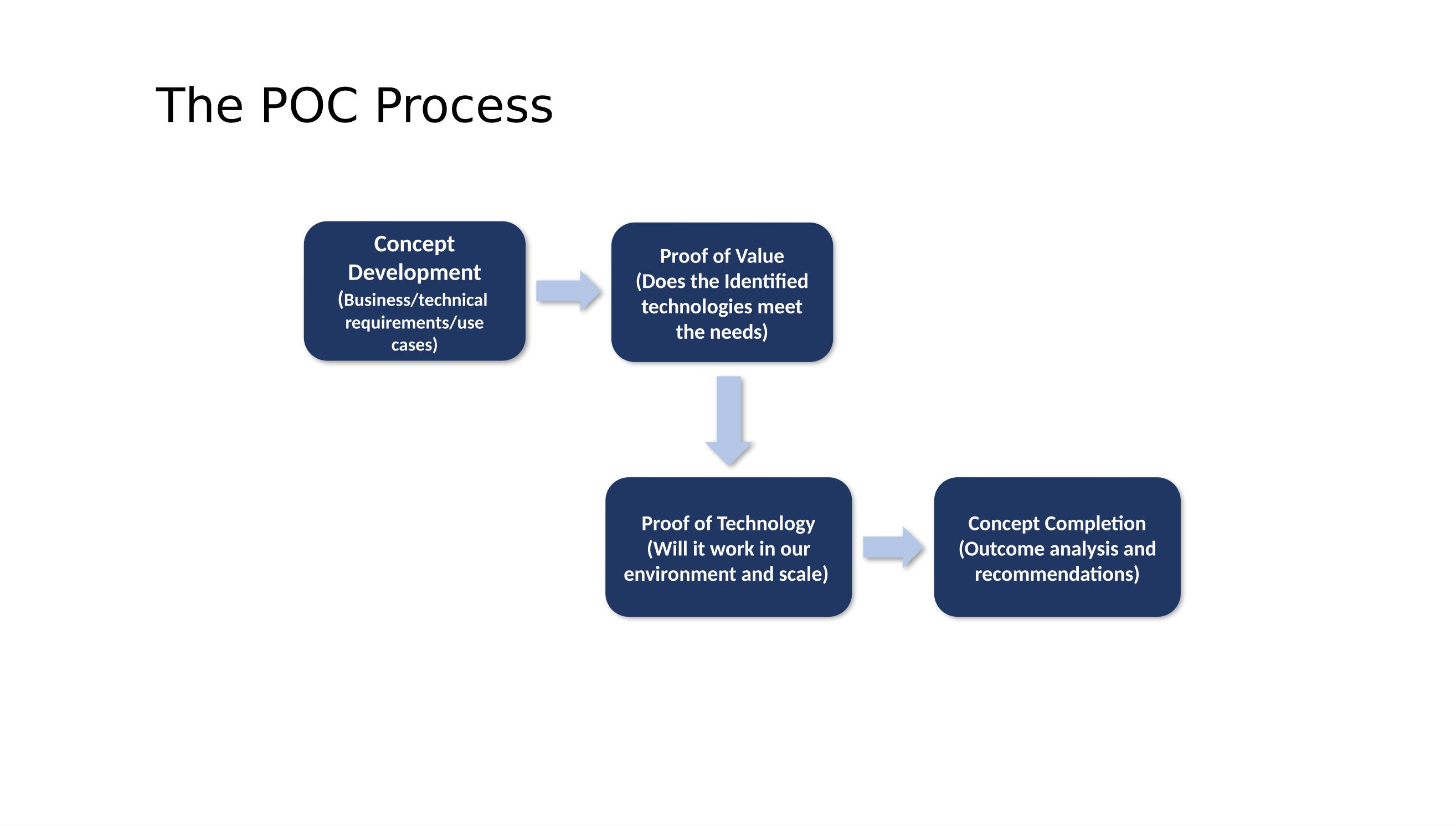Proof of Concept Framework
In app development and cloud computing, a Proof of Concept (POC) is a quick demo that checks if a new idea or project is doable and makes sense. It helps decide whether to move forward by showcasing key features and solving specific challenges before diving into full development in the cloud. As shown in the picture below, a POC consists of four (4) separate steps:
- Concept Development
- Proof of Value
- Proof of Technology
- Concept Completion

What is a Proof of Concept?
The approach to proof of concepts (POCs) is straightforward, business-focused, and efficient. A team should prioritize consistency and objectivity, ensuring a rapid delivery of POCs. By identifying existing capabilities within the enterprise, a team can accelerate implementation and cuts costs. The method reduces potential impacts and incompatibilities with enterprise capabilities. A catalog of all POC efforts is maintained, preventing duplications and ensuring streamlined technology testing. Additionally, there is an emphasis on early utilization or updates to reference architectures, ensuring that POCs address new challenges rather than rehashing old ones.
Concept Development
Concept development is focused on ensuring the analysis has been completed and the necessary inputs are documented and distributed to the necessary stakeholders. This stage addresses the following major themes:
- What is the problem are we trying to solve?
- Evaluation of potential reference architecture gaps
- Is this problem already being tackled by someone else?
- Technical capability alignment
- Determine if capability already exists in-house
- Determine strategic alignments
- Competitive analysis
- Experiment design
- Technology / vendor selection
- Development of POC implementation plan
Proof of Value
Proof of Value focuses on the ability of a product or technology to fulfill the defined business needs. The main ideas here are:
- Establishment of Proof of Value environment/runtime
- May be a lab environment, virtual environment, or full platform implementation (the latter is a blend of the Proof of Value and Proof of Technology phases)
- Perform functional evaluation
- Determine if the product/technology meets the business needs
- Identify the business owners of the product/technology. Note this may be different than the entity requesting the POC
- Determine the best strategy to integrate the new product/technology into the business
Proof of Technology
Proof of Technology is focused on the technological aspects of a product or new technology implementation, determining if it will fit/scale into the standard recommended architecture. This phase covers the key topics outlined below:
- Establish Proof of Technology environment/runtime, if not already established
- Perform functional evaluation to ensure the product technology will operate in environment, can be managed, and scale to the expected needs
- Identify the infrastructure owners of the product/technology
Concept Completion
Concept Completion is the summing of the Concept Development, Proof of Value and Proof of Technology phases into a cohesive package, providing the basis of a final product/technology go/no-go decision. In this phase, the key areas of attention encompass specific outputs:
- Combined value, business need, technology assessment
- Combined role/ownership assessment
- Cost-benefit assessment
- Final product/technology selection, go/no-go decision
Conclusion
In conclusion, the proposed approach to proof of concepts (POCs) emphasizes a business-focused, streamlined process that prioritizes consistency, efficiency, and cost reduction. By identifying existing capabilities, reducing potential impacts, and maintaining a catalog of POC efforts, the team ensures effective technology testing. The Concept Development, Proof of Value, Proof of Technology, and Concept Completion stages collectively form a comprehensive framework, providing a basis for informed go/no-go decisions by evaluating business needs, technology assessment, cost-benefit analysis, and final product/technology selection.
